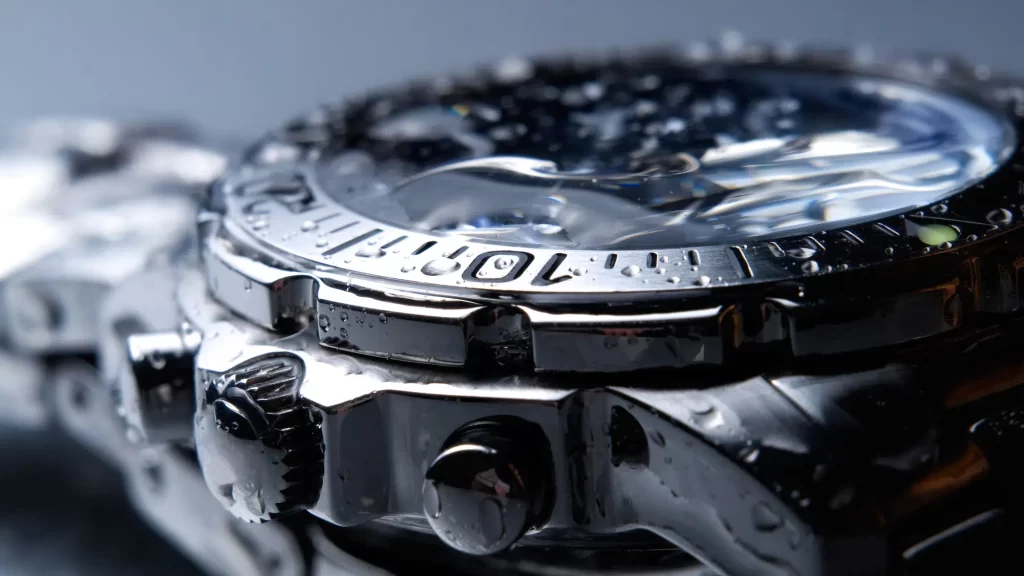Understanding watches water resistance ratings

Water resistance is an essential feature for many watch wearers. Whether you’re a diver or swimmer or want protection against accidental splashes, knowing what those numbers on your watch mean can help you make informed decisions about when and where to wear your timepiece. Water resistance ratings on watches typically indicate the depth to which a watch can be submerged without water entering the case. These ratings are usually expressed in meters or atmospheres (ATM). However, it’s crucial to understand that these numbers don’t necessarily represent the depth at which you can safely wear the watch underwater.
Common water resistance ratings
- Thirty meters (3 ATM) – This rating means the watch can withstand splashes and rain, but it’s unsuitable for swimming or diving. It’s best to remove watches with this rating before any water activities.
- Fifty meters (5 ATM) – Watches with this rating are suitable for swimming in shallow water and can handle brief immersion. However, they’re not designed for diving or high-impact water sports.
- One hundred meters (10 ATM) – These watches are suitable for recreational swimming and snorkelling. They can handle more prolonged exposure to water but are intended for something other than deep-water diving.
- Two hundred meters (20 ATM) – Watches with this rating suit most water sports, including recreational scuba diving. They can withstand significant water pressure and are often chosen by diving enthusiasts.
- Three hundred meters and above – These watches are designed for professional diving and withstand extreme water pressure. They often feature additional protective measures to ensure water resistance at great depths.
Factors affecting water resistance
- Age and wear – A watch’s seals can degrade over time, potentially compromising its water resistance. Regular maintenance is crucial to maintaining this feature.
- Temperature changes – Rapid temperature fluctuations can cause the materials in a watch to expand or contract, potentially creating gaps that allow water to enter.
- Button and crown usage underwater – Using buttons or adjusting the crown while submerging the watch can create openings for water to enter. It’s best to avoid these actions when the watch is wet.
- Impact and shock – Physical shocks can damage the seals or crystal of a watch, affecting its water resistance. Be cautious when wearing your watch during high-impact activities.
Maintenance tips for water-resistant watches
- Regular testing – Have your watch’s water resistance tested annually by a professional, especially if you frequently expose it to water.
- Rinse after exposure – If you’ve worn your watch in salt or chlorinated pool water, rinse it with fresh water afterwards to prevent corrosion.
- Professional servicing – Have your watch serviced every few years to ensure all seals and gaskets are in good condition.
Understanding water resistance limitations
Understanding that water resistance ratings are tested under static conditions in a laboratory is crucial. A watch may encounter dynamic pressures that exceed its rating in real-world use. For example, the impact of diving into a pool or the spray from a jet ski can exert more pressure on a watch than its static rating suggests.
In conclusion, understanding watch water resistance ratings is essential for properly caring for and using your timepiece. By knowing what these ratings mean and how to maintain your watch’s water resistance, you can ensure that your watch continues to function reliably, whether caught in a rainstorm or exploring the depths of the ocean. Check this website for more detailed information and updates on water-resistant watch technology and care.







